“Three-dimensional machining helps ease the processing of machine-engineered-grade polymers. Moreover, unlike conventional rapid manufacturing techniques, it can quickly create prototypes and lightweight geometrical parts.”
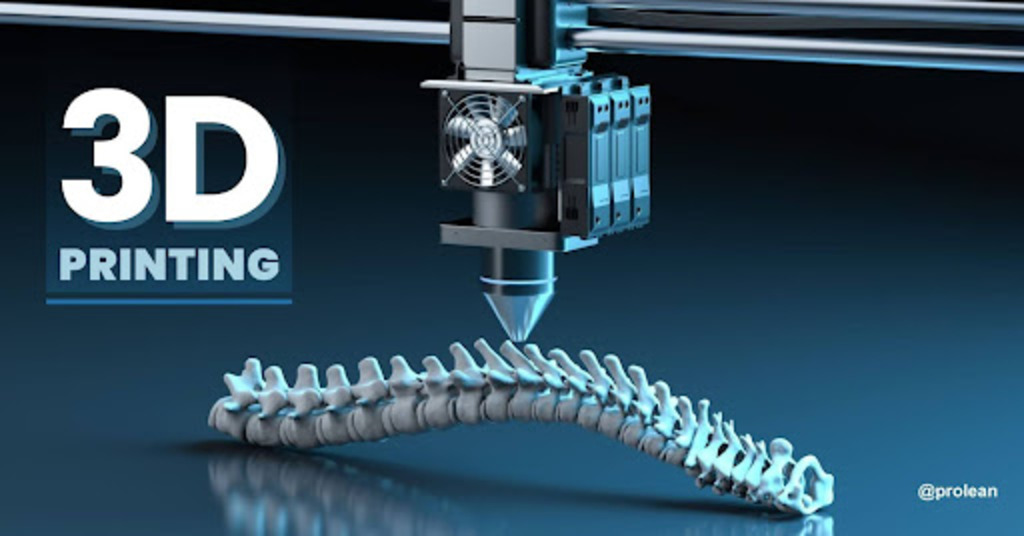
In the plastic working industry, 3D printing is an additive manufacturing technique for creating 3D designs from 3D digital blueprints. It benefits design professionals in creating aesthetic to functional prototypes for testing fits before initiating a full-scale production.
It involves stacking layers by layer, guided by a CNC system, to create a three-dimensional part in minimal time. Typically, 3D printing is fast and efficient for creating complex design parts. It has immense potential to disrupt the ever-evolving manufacturing logistics and inventory management.
Moreover, its setup costs are relatively lower than those of conventional techniques. Because of its precision and dimensional accuracy in the manufacturing industry, it gained significant attention in everything from architectural designs to prototypes for aerospace components.
This article discusses 3D printing processes, types, and industrial applications. It also covers the necessary tips for a successful 3D printing project.
What is 3D printing? How does it work?

3D Printing
3D printing is an additive manufacturing technique to create parts or products. The predetermined virtual illustrations or mathematical portrayal of the 3D surfaces are curated in software like MatterControl 2.0, Tinkercad, Blender, UVTools, WebPrinters, and Ultimaker Cura. After finalizing the design, the files are prepared for printing. Here, the design is broken down by slicing it into 100s to 1000s horizontal layers or vertical layers, depending upon the part configuration. Then, the sliced model is fed to the 3D printer.
In the 3D printing process, the plastic material is laid down in its successive layers in sequential order until the formation of a part or product. This process is known as material extrusion. These printers are notably compact and relatively economical to produce parts in low-volume orders to bulk. Moreover, 3D printing materials are expanding their range from plastics to low-cost engineered-grade polymers. They generally require a minimal budget for their infrastructure. One of the core benefits is that 3D printing uses less material to form prototypes, unlike conventional methods. Further to their parts design capabilities, nearly any conceptual design that comes to your mind, a standard 3d printer can replicate. A standard small-size 3D printer usually costs in the range of $300 to $400 approx.
Try Prolean Now!
Main Parts of 3D Printer
3D printers are synchronized by various stationary, and moveable parts for developing the prototype designs. Usually, 3d printers are characterized by 5 main components mentioned in the table, underneath;
Table: Main Parts of 3D Printers
| Parts | Functionality |
| Print head | It’s a heating element of a 3d printer that subsequently deposits plastic materials to create a product. |
| Build trays | The place where actual designs are created by heating, or unheating depends upon the intended type of 3d printing technology. |
| Motion controller | It’s the main part used to regulate the 3d printing process. It contains mechanical utilities including; motors, belts, screws, and end stops. |
| Motherboard | It’s the core part that contains electrical components. It controls all functionalities of 3d printers such as; speed and amount of material deposition. |
| Power supply | The power supply is used to source all electrical parts in 3d printers. |
Types of Plastic 3D Printing
Here are some of the commonest types of 3D printing technology including;
- Stereolithography (SLA)
- Fused Deposition Modeling (FDM)
- Selective Laser Sintering (SLS)
- Digital Light Process (DLP)
- Polyjet
- Multi Jet Fusion
Stereolithography (SLA)
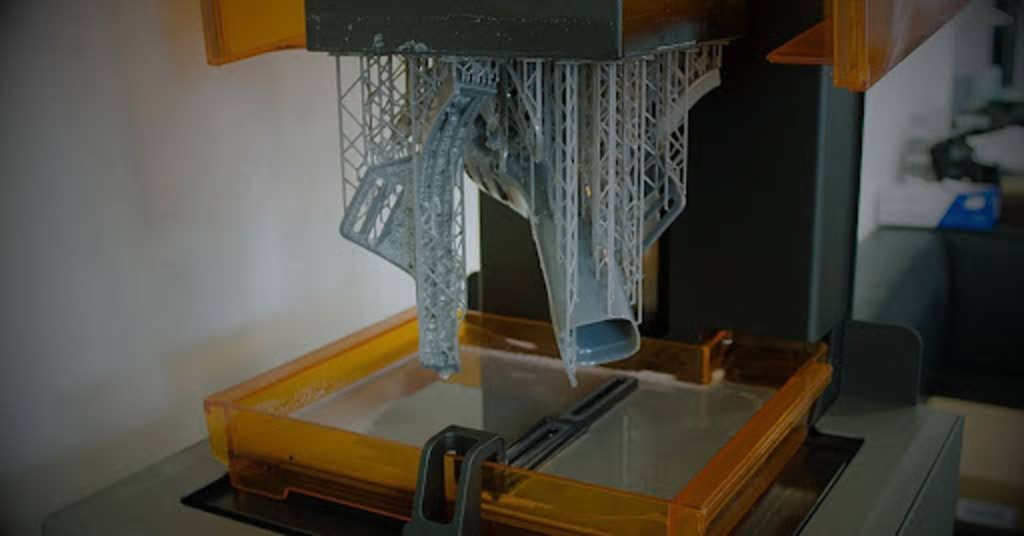
SLA 3D Printing
SLA is emphasized as the first commercial 3D printing technology. It uses a vatting tank of a liquid photopolymer that is warmed initially to cure its subsequent layers into the intended part material.
SLA can quickly replicate high-resolution detailed prototypes, intricate parts, and patterns for investment casting. Moreover, it helps designers shape exemplary detailed components for testing fits of an assembled engineering product.
Table: Plastic Types Used in SLA & Applications
| Material | Applications | Precision Level |
| Polypropylene, ABS, and Glass-filled polycarbonates | Prototypes for jigs, fixtures, and casting patterns | 0.1 mm to 0.2 mm |
Fused Deposition Modeling (FDM)
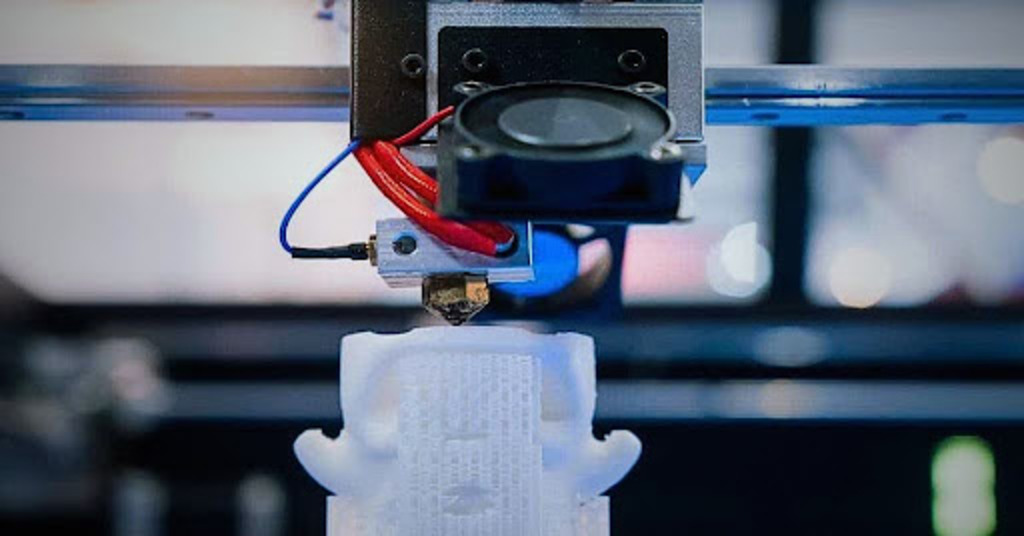
FDM 3D Printing
Fused deposition modeling works by melting plastic filament and extruding it through a heating nozzle in sequential layers to form a prototype product. The resolution and dimensional accuracy from FDM is relatively lower compared to SLA. Further, it can be prone to damage after long exposure to ultraviolet radiation.
When it comes to material compatibility, it can deposit various sturdy thermoplastics onto flexible elastomers for item making. It finds extensive use in shaping proof-of-concept models and simpler to complex prototypes.
Table: Compatible Materials & Applications
| Material | Applications | Precision Level |
| PET, ABS, ETG, PLA | It incorporates fit testings, Prototypes for jigs, fixtures, and investment casting patterns | 0.1 mm to 0.2 mm |
Selective Laser Sintering (SLS)
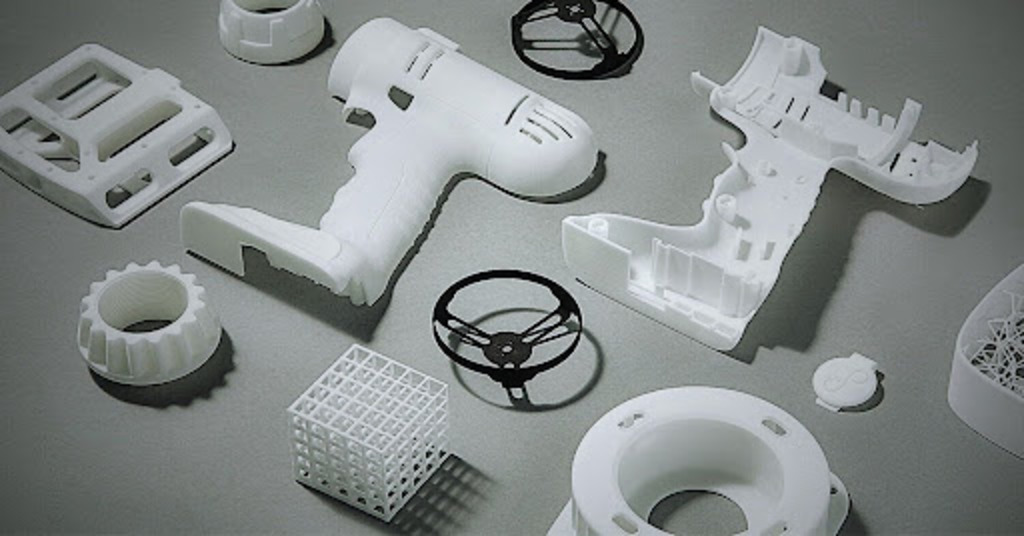
SLS nylon 3d printing parts
As the name implies, it works by sintering a laser on strong thermoplastic powder to build prototypes for functional testing. This laser melts the plastic material and fuses it through a heating nozzle layer by layer to build a product. The process meticulously consumes all material during the process. Usually, it doesn’t require any support structures during product development. Moreover, 3D parts made through SLS are more resilient and highly dimensionally stable than fused deposition and SLA techniques. Further, parts acquire higher strength than injection-molded parts.
Table: Compatible Materials & Applications
| Material | Applications | Precision Level |
| Nylon 6, nylon 11, nylon 12, and polyamide 12 | It incorporates fit testings, Prototypes for jigs, fixtures, and investment casting patterns | 0.1 mm to 0.2 mm |
Digital Light Process (DLP)

Digital Light Processing
DLP’s process resembles SLA’s. It involves the use of conventional light sources rather than laser light. In general, DLP is relatively cheaper and produces higher-quality parts than SLA. Moreover, the process is comparatively fast, as it imprints the complete part at once. In addition to surface finish, these printers often produce highly smooth surface textures for end-use products.
Table: Compatible Materials & Applications
| Material | Applications | Precision Level |
| Polyvinyl chloride, ABS, polypropylene | Dental splints, adornments, amplifiers, and jewelry casting | 0.1 mm to 0.2 mm |
Multi Jet Fusion (MJF)
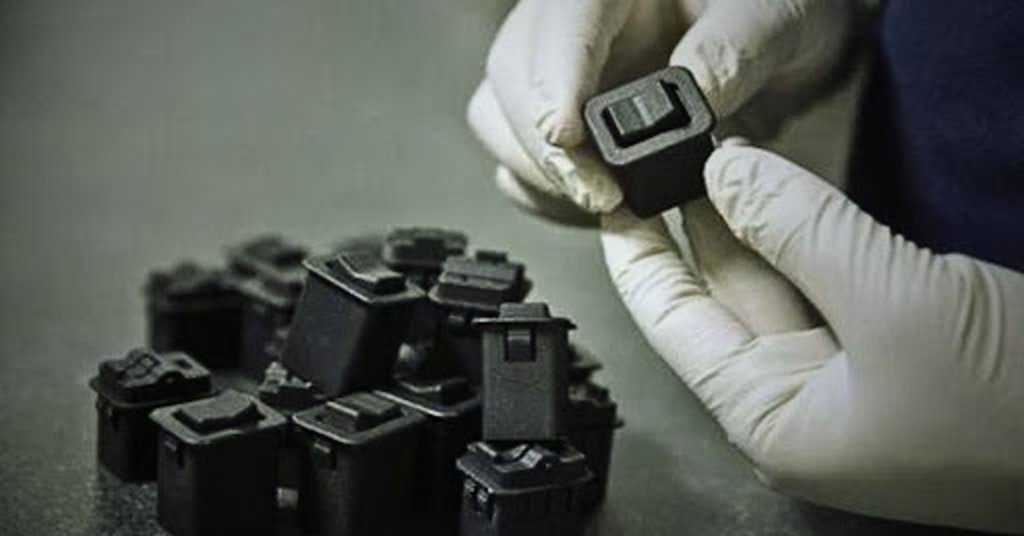
Multi Jet Printed Parts
In the process, multi-jet fusion is similar to SLS as both use nylon power for functional prototype development. These 3d printers ply inkjet clusters to nylon powder to build up a product layer by layer by fusing a heating element. MJF helps produce varied colored end-use products and enhances the resolution of intended parts. Moreover, it takes a minimum lead time to form a product and is notably considered an economical technique in 3d printing technology.
Table: Compatible Materials & Applications
| Material | Applications | Accuracy |
|
PA 12 black, polypropylene PA 12 40% glass-filled black |
Prototypes, medical devices, bellow, baffles, jigs, and fixtures |
0.05 mm |
Polyjet
Polyjet refers to a traditional 3d printing technology that has a remarkable resemblance in operation to conventional inkjet printers. It works by dropping photopolymers on a build plate by sintering UV light to form a product. Polyjet 3d printers are more inexpensive than SL and SLS. Product designers can use poly jets, where prototypes are needed to test the initial design fits of an assembly. In addition, they can forge multicolor and multi-material parts.
Table: Compatible Materials & Applications
| Material | Applications | Accuracy |
| Polypropylene, ABS, rubber-like materials, optically clear materials | Overmolding and elastomeric prototypes | 0.1 mm |
Try Prolean Now!
Metal 3D Printing Technologies
Besides 3D Printing Plastics, 3d printing technology is also compatible with several high-strength metals to design functional prototypes or end-use products. The most commonly used metals include stainless steel, aluminum, copper, tungsten, and titanium. Here are the types of 3d printing coherent for the aforementioned metals;
- Electron Beam Melting (EBM)
- Direct Metal Laser Sintering (DMLS)
Electron Beam Melting (EBM)
Electron beam melting is a metal 3d printing process. As the name suggests, it uses a high-energy electron beam to fuse metal powder in subsequent homogeneous layers to form a product as per the required specifications. It works by creating a vacuum under 0.0001 mbar inside a printing chamber. The optimal temperature required to fuse material is around 600 to 700 ℃. Compared to other 3d printing technologies, EBM is speedy and cost-efficient. Moreover, it can be used as a substitute for CNC machining and casting techniques, as it produces highly durable parts.
Table: Compatible Materials & Applications
| Material | Applications | Accuracy |
| Tantalum, tungsten, vanadium, and titanium | Aerospace, automotive, and medical components | N/A |
Direct Metal Laser Sintering (DMLS)
DMLS is another metal 3d printing technique. In comparison between direct metal laser sintering 3D Printing vs CNC Machining, it offers more flexibility, repeatability, precision, and speedy production benefits. Moreover, it is notably an efficient option for producing intricate, detailed prototypes. Generally, it reduces metals and turns multifarious part assemblies into lightweight or single components.
Table: Compatible Materials & Applications
| Material | Applications | Accuracy |
| Stainless steel, aluminum, nickel alloys, and copper. Etc. | Aerospace, automotive, and mimic medical prototypes | 0.1 mm |
Additive Vs. Subtractive Manufacturing
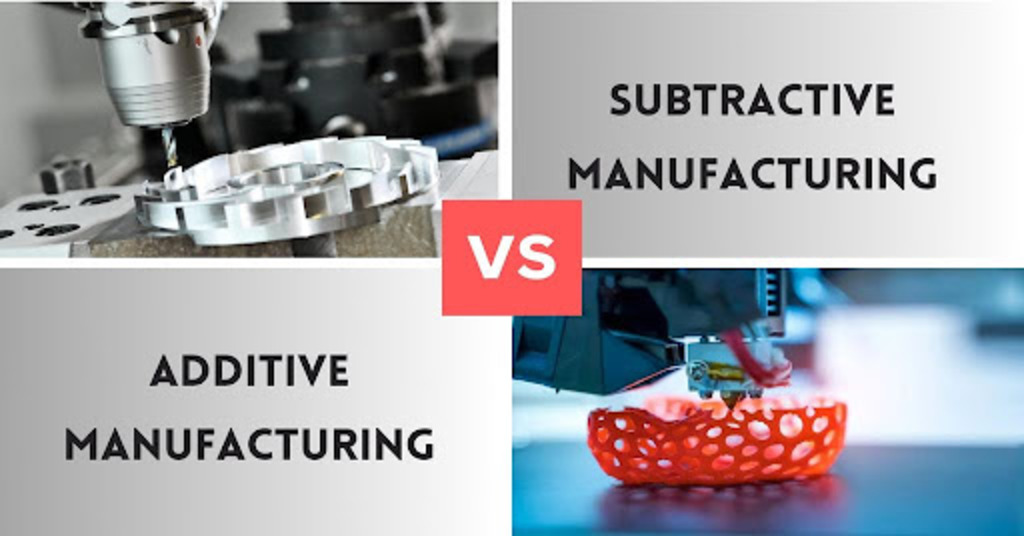
Additive Vs. Subtractive Manufacturing
Additive manufacturing adds material in sequential layers to create a product. Subtractive manufacturing, in contrast, removes material from existing parts to shape them into the desired form. These fundamental approaches are used widely across manufacturing industries due to the material’s flexibility and exceptional accuracy. Beyond that, these techniques have exploded as economical options for large-volume batches.
Although many manufacturing techniques exist, CNC machining and 3d printing are the two most widely adopted for their versatile benefits. Let’s evaluate the distinctions between them;
Table: Additive vs. subtractive manufacturing
| Aspects | Subtractive Manufacturing | Additive Manufacturing |
| Material usage | Accommodate various solid blocks, bars, rods of plastics, metals | Thermoplastics resins, high strength, rigid, elastic, and castable(wax-like) materials are used |
| Tooling & setup costs | Higher tooling costs, but lower initial setup costs. | Lower tooling costs, but higher initial setup costs about $2000, $10000 for mid-range 3d-printers |
| Production speed | Usually slower, and more expensive for large volume batches production. | Comparatively, fast production speed, and is efficient for large production runs. |
| Design complexity | Allows to create of any complicated geometrical designs; for instance, threads, holes, screws, and cylinders | It also facilitates to creation of intricate designs but limited to more detailed parts or components |
| Accuracy | Tolerance about 0.025 mm | Tolerance around 0.1 mm |
Related To: CNC Machining Vs 3D Printing: An In-Depth Comparison
Try Prolean Now!
Applications of 3D Printing
3D printing technology is so widespread across several manufacturing sectors. It is immensely used in aviation, automotive, construction, medicare, prototyping, and manufacturing industries.
Aviation
In the aviation and defense industries, 3d printing technology has introduced a precise way to shape critical components of aircraft. These industries require complex shapes and lightweight parts to improve the functionality and performance of various engine components. Therefore, OEM designers and suppliers benefit from its economic viability to produce lightweight parts in a short turnaround. A few examples include braces, mounts, turbine blades and central frames, functional prototypes, and structural components for defense systems.
Automobile
3d printing has exploded the automotive industries by providing fast prototyping and lightweight components, especially for racing automobiles. The established sectors like Mitsubishi and Chemical, or BASF, have already introduced 3d printing technology. Generally, fused deposition modeling is used to build custom 3d printing prototypes and end-use parts. Some common examples include automobile dashboards, HVAC ducts, vents, and interior seat prototype accessories.
Prototyping and Manufacturing

3D Printed Prototypes
In comparison to 3D Printing Vs. Injection Molding, injection molds usually take several weeks to produce. Therefore, these molds, in general, are more expensive than 3d printing, and cost up to $100s to $1000s. As discussed above, the primary scope of employing 3d printing is to create complex shape prototypes. Further, 3D Printed Cats, aesthetic complex models for consumers, and architectural needs can be made through 3d printing.
These advanced feature techniques can bring parts in just a few hours, all while on an affordable budget. In addition, custom 3d printing is ideal for creating prototypes for testing and iterating early designs. The most profitable techniques for crafting prototypes are SLS and DMLS.
Medicare

3D-printed bone structure
In the healthcare sector, 3d printers are used for designing devices for orthopedics, and implants to cast metal dental crowns. Moreover, it helps to manufacture tools and scaffold structures of human structures. These scaffolds provide cells and tissues a framework to grow and regenerate tissues. Besides, custom 3d printing helps replicate personalized prosthetics, and patient-specific devices; such as; hearing aids, and orthotics insoles. In addition to this, 3D-printed bones, skin, tissue, and organs, also contribute to the patient’s care.
3D Printing Technology for Construction
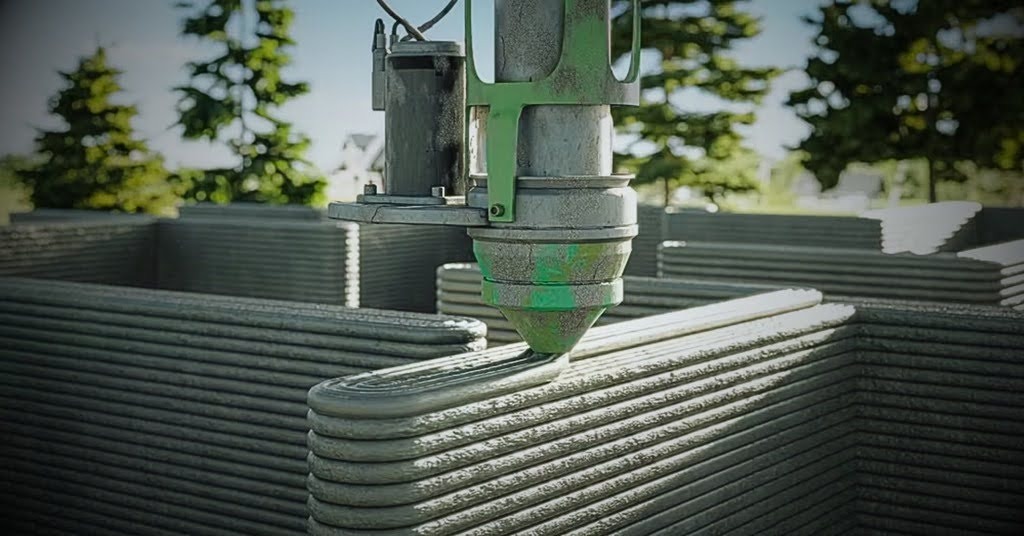
3D Printing Technology for Construction
Construction industries typically use ‘’Construction 3D printers’’ for power binding, and spraying prospects. These printers operate by controlled robotic arm extruders, and gantry systems to gently create construction models, small structures, and building components. Beyond this, 3d printing is an economical solution to create more complex construction patterns and improve functional integration by minimizing waste, and manpower requirements.
3D Printing Services at Prolean
Prolean offers affordable, and best-in-class 3d printing prototyping services. Our experts help you make a wise selection of material, and provide assistance in design improvements for optimal outcomes. Our facility is equipped with an advanced 3d printer and offers a bunch of material options for our valued customers to choose from.
Whether it’s complex prototype manufacturing or mass production, we can meet your requirements without compromising on quality standards in short leads of time. Contact us now and get your instant 3d printing service quote!
Try Prolean Now!
Summing Up
3d printing offers several benefits in rapidly manufacturing prototypes for medical, aviation, and automotive components. This additive manufacturing technique uses multiple 3d printing materials, from plastics, ceramics, and edibles to exotic metals such as; titanium, tungsten, and copper.
These printers have advanced the possibilities of manufacturing various components and fulfilling aftermarket demands that were once difficult for conventional techniques like casting, machining, and injection molding. Additionally, they shortened the production cycle times. This article contains a comprehensive outlook of 3d printing technology from a deeper aspect. So, you can get valuable insight about the emergence of 3d printing technology, and its usefulness.
FAQs
Q1. What are the limitations of 3d printing?
Besides their advantages, 3d printing has a few limitations too. These include; limited material options, post-processing requirements, and increased costs at high volumes.
Q2. Which plastic materials are flexible for 3d printing?
Thermoplastic materials are deemed to be compatible, and flexible 3d printing materials. Some of the common include; polyurethane, polycarbonate, and high-performance plastics like PEEK, and polylactic acids (PLA). Among these PLA filaments are mostly extruded in 3d printing applications. Learn more about Mastering 3D Printing: A Guide to the Best PLA Materials.
Q3. Are there any ongoing advancements beyond 3D printing?
Yes, the future holds new advancements like 4D and 5D printing in additive manufacturing. These innovations are likely to contribute to reducing the weight of components and optimize the performance of 3D printers to bring products in a short period.
Q4. What are the benefits of 3d printing?
3d printers offer complete customization in manufacturing parts. These printers follow automated guidelines to create products flawlessly. Also, considerably ideal for designing prototypes for various industrial use end products.
Q5. What are the main issues caused during 3d printing product development?
Although 3D printers are precise and accurately produce complex shapes, process parameters like temperature, printing speed, and filaments getting entangled are the main issues during the 3D printing process.
Resource
- Shahabudin, T.C. Lee, R. Ramlan, (2019): An Overview on 3D Printing Technology: Technological, Materials, and Applications, Procedia Manufacturing; Retrieved From: Science Direct.

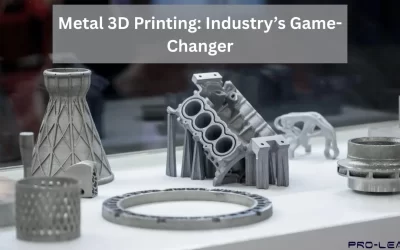
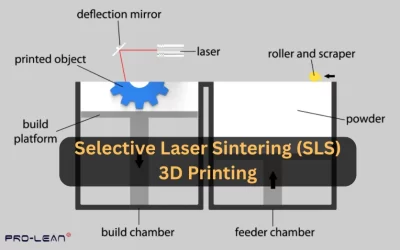

Can I print custom HVAC ducts with 3D printing?
Yes, you can print HVAC ductss with Stereolithography 3D printing
Yes, you can print HVAC ducts with Stereolithography 3D printing